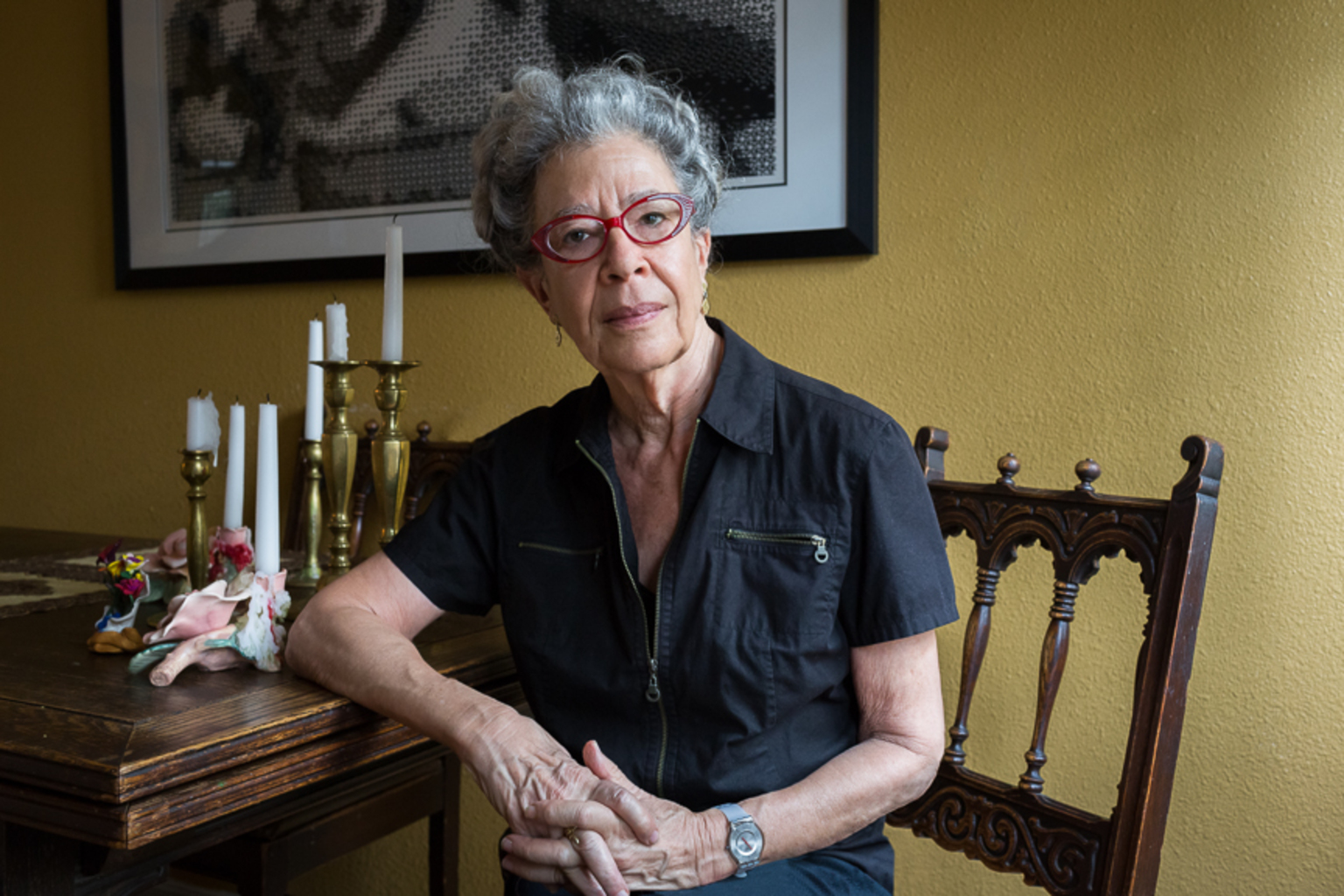Forelesning

Gjesteforelesning med Deborah Hay - Reorganizing Myself
Med røtter i 60-tallets eksperimentelle dansekunst, har den internasjonalt annerkjente dansekunstneren Debora Hay (f. 1941) endret hvordan dans betraktes og fremføres. Lørdag 18. juni holder hun åpen forelesning på Kunsthøgskolens scene 4.
Dansekunstneren og koreografen Hay var med på å starte Judson Dance Theater, et avantgardekollektiv av dansere, komponister og kunstnere i New York på 60-tallet. Fra dette utgangspunktet har hun reformulert dans til å inkludere subtile former for innsikt og åpenbaring.
My work is served by the notion that there is no single coherent person who dances.
- Deborah Hay
Her er et klipp fra hennes koreografi og dans i Solo (1966):
Se også et utdrag fra en forelesning i 2010, hvor hun snakker om å fremføre skjønnhet:
Foto (øverst): Leon Alesi
Biografi:
Deborah Hay was born in Brooklyn. Her mother was her first dance teacher, and directed her training until she was a teenager. She moved to Manhattan in the 1960s, where she continued her training with Merce Cunningham and Mia Slavenska. In 1964, Hay danced with the Cunningham Dance Company during a 6-month tour through Europe and Asia. She was also sharing with her Judson colleagues the artificial distinction between trained and untrained performers. She focused on large-scale dance projects involving untrained dancers, fragmented and choreographed music accompaniment, and the execution of ordinary movement patterns performed under stressful conditions.
In 1970 she left New York to live in a community in northern Vermont. Soon, she distanced herself from the performing arena, producing Ten Circle Dances, performed on 10 consecutive nights within a single community and no audience whatsoever. Thus began a long period of reflection about how dance is transmitted and presented. Her first book, Moving Through the Universe in Bare Feet (Swallow Press, 1975), is an early example of her distinctive memory/concept mode of choreographic record, and emphasizes the narratives underlining the process of her dance-making, rather than the technical specifications or notations of their form.
In 1976 Hay left Vermont and moved to Austin, Texas. Her attention focused on a set of practices ("playing awake") that engaged the performer on several levels of consciousness at once. While developing her concepts she instituted a yearly four-month group workshop that culminated in large group public performances and from these group pieces she distilled her solo dances. Her second book, Lamb at the Altar: The Story of a Dance (Duke University Press, 1994), documents the unique creative process that defined these works.
In the late 1990’s Deborah Hay focused almost exclusively on rarified and enigmatic solo dances based on her new experimental choreographic method, such as The Man Who Grew Common in Wisdom, Voilà, The Other Side of O, Fire, Boom Boom Boom, Music, Beauty, The Ridge, Room, performing them around the world and passing them on to noted performers in the US, Europe, and Australia. Also, My Body, The Buddhist, her third book was published by Wesleyan University Press, 2000. It is an introspective series of reflections on the major lessons of life that she has learned from her body while dancing. Her fourth book, Using the Sky: a dance, was published by Rutledge Books and is available in bookstores and online now.
Hay conducted 14 annual Solo Performance Commissioning Projects from 1998 through 2012, first on Whidbey Island in Washington state and then at the Findhorn Community Foundation in Findhorn, Scotland. A film about this groundbreaking experiment, Turn Your F*^king Head, was made by Becky Edmunds in 2012. Rutledge Books produced and is now distributing this one hour documentary.
In 2002 Hay made a decision to apply what she had learned from 30 years of working with mostly untrained dancers to choreographing dances for experienced dancer/choreographers. In 2004 she received a NYC Bessie award for her quartet The Match. In 2006 she choreographed “O, O” for 5 New York City choreographer/dancers and then for 7 French dancers of comparable experience. The Festival d’Automne, in Paris, presented The Match in 2005, “O, O” in 2006, andIf I Sing To You, in 2008, which was commissioned by The Forsythe Company and which toured extensively in Europe and Australia. In 2009 The Toronto Dance Theatre premiered her work, Up Until Now, and in 2010 Lightening premiered at the Helsinki Festival, a dance for 6 Finnish dancers/choreographers.
In October 2009 Deborah received an Honorary Degree of Doctor of Dance from the Theater Academy in Helsinki, Finland and in 2010 she was awarded an US Artist Friends Fellowship and a 2011 artist’s grant from the Foundation for Contemporary Arts, based in New York. In April 2012, Deborah Hay became one of the 21 American performing artists to receive the inaugural and groundbreaking 2012 Doris Duke Artist Award.
After a two year research collaboration with Motion Bank, a project of the Forsythe Company directed by Scott delaHunta, an online interactive website dedicated to Hay's choreographic aesthetics was launched in June 2013. One outcome of that collaboration was Hay's first museum installation, Perception Unfolds: Looking at Deborah Hay's Dance, curated by Annette Carlozzi for the Blanton Museum in Austin, TX. The installation also travelled to Yale Art Museum in New Haven, CN.
Hay, in collaboration with Laurie Anderson and lighting designer Minna Tikkainen created an evening length work Figure a Sea, for 21 dancers and commissioned by the Cullberg Ballet in Stockholm, Sweden. It premiered September 24, 2015.
May 5, 2015 France's Minister of Culture and Communication awarded Hay the title of CHEVALIER DE L'ORDRE DES ARTS ET DES LETTRES.